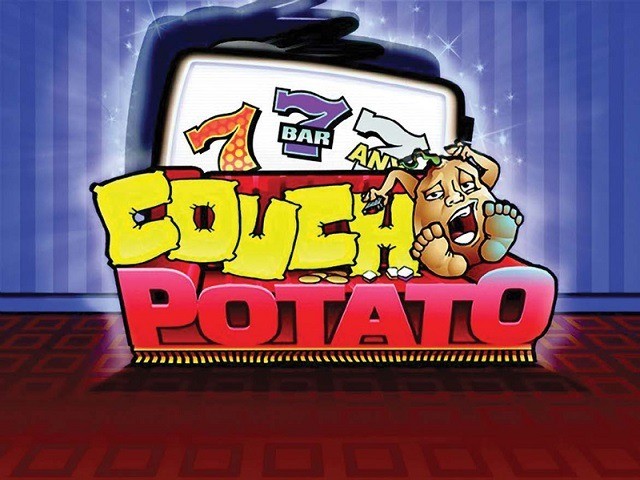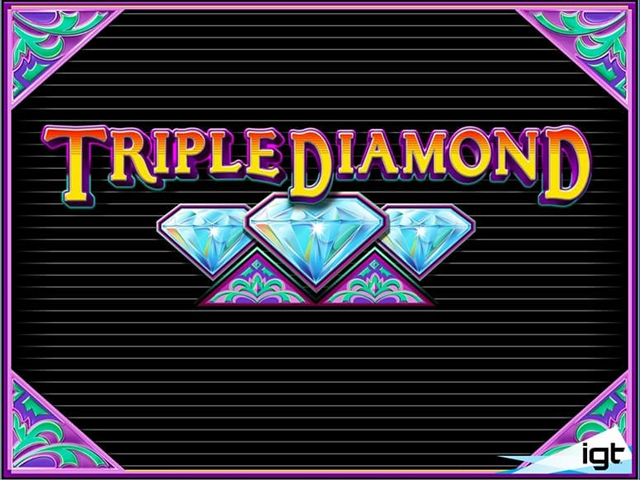How to Play Blackjack
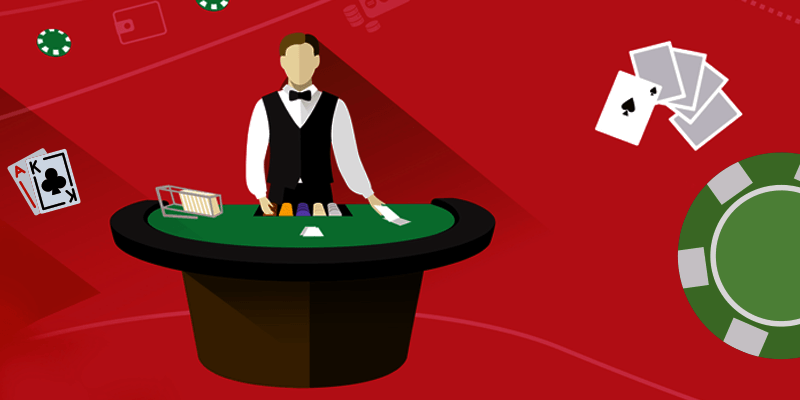
Blackjack: Tips and Tricks to Play
Blackjack is one of the most popular table games available in casinos. It is the one which is possible to beat. When you play blackjack, your main objective is to outplay the dealer. Many people have misconceptions about this game, and here is the list of pure facts to debunk all the myths.
Basic Rules of Playing
- The goal of the card game is to beat the hand of the dealer but not going over 21;
- The value of the face cards is 10, and the value of the aces is either 1 or 11, depending on the settings you have;
- It starts with 2 cards for each punter, and one of the cards of the croupier will be hidden till the end;
- Hit means to request another card and Stand indicates holding your total and putting an end to the turn;
- In case you have card value over 21, you will be busted, and the dealer is going to win, irrespective of the hand they have;
- In case you are given a card with a value of 21 from the beginning, you have received a blackjack;
- Blackjack gives you 1.5 of your betting amount, depending on the casino;
- Dealer is going to hit till his/her cards have a total of 17 or higher;
- Doubling is just like a hit. It means your bet will be doubled, and the player receives one more card;
- Split is done if you have 2 same cards. The pair gets split into 2 hands;
- Splitting will double your bet as every new set is worth the actual bet;
- You will only be able to split or double in the first move or the first move of hand that is created by the split;
- Two aces cannot be played after they have been split;
- It is possible to double on a set which results from a split, quadrupling, or tripling your bet.
How to Get Started?
There are different theories in regards to the origin of blackjack. The widely accepted one is that it started in France in the 18th century. This was popular in courts of Louis XV and was also known as Vingt-Un or Vingt-et-Un. This translates to 21. In the modern version, there were some differences. For instance, just the croupier can double down, and the bet is placed with each card that is given out. However, its basic objective was to get as close to 21 as possible and avoid being busted.
Similar games that were influenced by this one can be traced back even further in time. Games like Spanish Trent-Un, French Quinze, and Italian Sette e Mezzo are attributed to the card values, and their aim was to reach out to a specific number. A few of this version counted the ace as 1 or 11 as is to be found in the modern-day version.
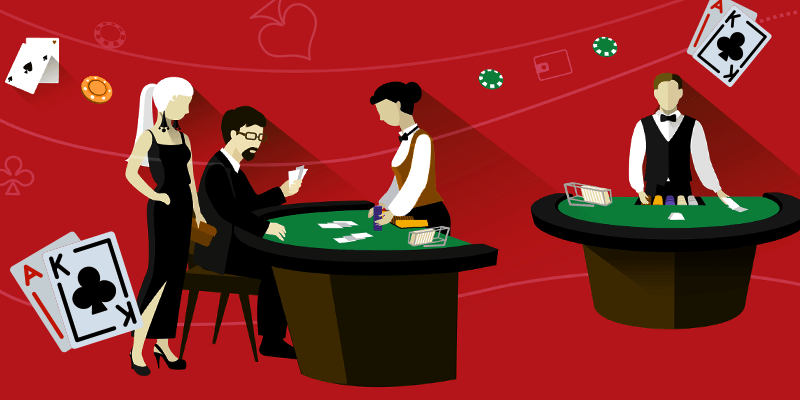
Rules to Play Blackjack
Blackjack is played with 52 cards, and each denomination has a specific point value. Your main objective is to defeat the dealer by having a total which is more than the total of the croupier and not going over 21 in the process.
Card Value
When you play blackjack, the numbered cards that are from 2-10 will have a face value. Kings, Queens, and Jacks will be valued at 10 and Aces will have a face value of 1 or 11. Ace is usually valued 11 unless the hand total results in more than 21. In such cases, it is valued as 1.
A hand with an ace that is valued 11 will be known as a soft hand, and all others are called hard hands.
A hand starting with 10 value and ace is known as natural or blackjack. It beats all hands with the blackjack being the only exception. In case both the dealer and the player have blackjack, it will result in a tie. Thus, neither the player nor the bank will win, and the bet will be returned to the gambler.
Busting
If the hands of the croupier or the punter exceed a total of 21, it is called busting. This is called busting. At times, it is also known as a break if the dealer’s hands have a total card value more than 21. Thus, if a punter is being given out 10-6, draws a card that is 9, the player will be busted.
Hard vs Soft Hand
A hard hand is one which either doesn’t have an ace and if it does, the ace will be counted as 1. For instance, 10-8 is hard 18, and also 2-10-A-5 is hard 18. A hand which contains ace counting as 11 is called a soft hand. For instance, if A-5 is soft 16, whole, 5-A-2 is soft 18. When the player has their first 2 cards, and they find one of them to be ace, they count as 11. Usually, when you are dealt a soft hand and then draw more hands, your hand is going to convert to a hard hand.
For instance, a punter is being dealt 5-A, this is soft 16, and then they draw another card. If what has been drawn is 6, you will have a hard hand. This means you are never going to bust if you are drawing a soft hand. You should know how soft and hard hand differ from one another since the playing strategy varies accordingly even if the set total is the same. For instance, 10-6 will be played differently than A-5. The first one is a hard hand, while the latter one is a soft hand.
Blackjack Betting Rules
In a casino, the game is played on a table that is semicircular in shape with a sitting for a maximum of seven players. You will find a circle or a square box which is called the betting spot. This is placed in front of each player. Whatever you wager with the casino chips will be placed in this box. A skilled dealer will deal the card according to the guidelines of a casino as well as collect bets from the losing punter, paying off the winning bets, and keep the game in motion at a steady pace.
Chip Value
Usually, the casino chip is colour coded. This is mainly to signify the denomination. However, the value is also printed on the chip. A white chip has a valuation of $1. The other denomination has been given below.
- Red- $5;
- Green: $25;
- Black- $100;
- Purple- $500;
- Orange- $1000.
In casino lingo, $5 chips are also called nickels, green chips – quarters, black chips – blacks, purple – Barneys, and orange – pumpkins.
Total Card Decks
Each table has signage signifying the maximum and the minimum betting limits. For instance, when a table gets a minimum bet of $25, you will not be allowed to bet a red chip. Your bet has to be more than or equal to $25. Thus, before you are sitting down to play, check the table betting limit which is usually to be found posted on it.
Before the cards are being dealt, all players have to make a bet by putting their chips in their own betting boxes. Everyone at the table who has wagered will get 2 cards. One among the 2 cards of the dealer is called the upcard will always be dealt face up. This way, the players can see its value. The other card he has will be known as the hole card or the down card.
Generally, the games which are dealt from dealing shoe which contains 4, 6, 8 deck of cards, the cards of the punters are going to be given out face up. In the games where the dealer deals by hand pitching cards to all players are either double or single deck games and both the cards of the punters are dealt facing down. In this game, players are allowed to manage their cards with just one hand, and the cards should be above the table.
When the player is done taking a look at his/her initial two cards and checks the value of one among the two cards of the dealer, he/she has to decide on their action.
What Are the Playing Options?
After the deal is complete, punters will have to decide how they are going to play their hands. When the punters are done with, the dealer is going to play as per the rules.
-
Hitting
This basically means you want the dealer to provide you with another card. In a shoe game, you can indicate to the dealer that you would like to hit, and this can be done by tapping the table behind the cards you have or motioning with your finger. However, in hand-held games, the player has to scratch lightly on the edge of cards.
-
Standing
If you choose to stand and are satisfied with your hand, you are going to draw no more with the hope that the present total bet is enough for beating the dealer. Just wave your hand over the cards by keeping your palms facing downwards to indicate you want to stand. However, in a hand-held version, you have to tuck your hand under the chips placed in the betting box.
-
Pair Splitting
When you have a set with the same identical cards, you have the option to split. If you are splitting, you are simply making another bet that equals the original bet. All you have to do is place the new chip next to the original chip on the hand.
While pair splitting, you will be playing each of your cards as separate hands except for split aces. A majority of the casinos only allow one draw for each ace. For instance, when you are dealt a pair of 8, and you decide to split, you will have two different hands with 8 on each one of them. Now, play out the split hands on the right, placing it right beside each other. If you have to show that you want to split, you simply have to place one chip beside the original one. For a hand-held game, you will have to toss the dealt hand that you would like to split on the layout, face-up and then make your second bet. Almost all casinos allow their punters to split their 10 value hand like Queen-King or Jack-Ten. Nevertheless, this blackjack strategy is not recommended.
-
Doubling Down
With this, you can multiply the initial bet by two, you have made in return for securing a draw. In a majority of the casinos, you will only be able to double the draw after you have received the first 2 cards and prior to drawing another. When you have double down, you have to signal the deal just by putting the chip next to your original chip for betting on the hand. This is for the shoe-dealt version. In a hand-held game, you have to toss the hand you have facing up on the table and make the second bet.
Casinos let you double down less than the initial wager. However, you will come to know that it is not a good wager.
-
Surrender
This is not available to you all the time. With this, the punter will be able to forfeit the set instantly and lose their initial bet. In most of the gambling dens, punters can surrender the initial set only when the dealer is done checking the cards and ascertaining that he/she doesn’t have a blackjack. When the punter has drawn, this option will no longer be available. Again, when the dealer has a blackjack, surrender playing option isn’t available.
When you have to surrender, all you have to do is tell the dealer that you would like to surrender. However, there are a few gambling dens where you will have to signal in order to surrender. This is by drawing an imaginary line with your finger from left to right on the felt layout. When you surrender the set, the dealer is going to withdraw the cards from the table and then place a half of the bet of the player on the chip rack. Another kind of surrender which is offered by gamblers is called early surrender. In this case, the gambler surrenders the whole set prior to the dealer checking the cards for blackjack. It is better to surrender early than to surrender late.
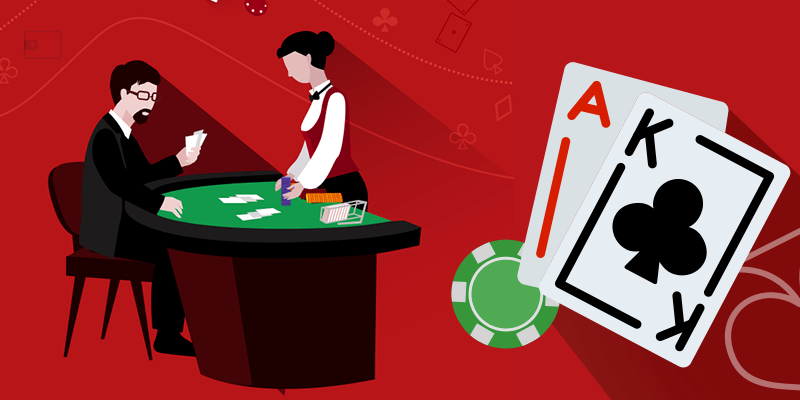
Insurance
This is mainly a bet on whether or not the dealer has 21 of the deal and requires you to lay half of the original bet. In case the croupier has 21, the house is going to pay the insurance bet of 2:1. The payout is going to erase the initial wager loss.
In case the croupier has 21, the gambler is going to lose the initial wager but is going to receive a payout of 1:1. This means they are going to get the same amount. When both get 21, according to the blackjack rules, it is said to be a push (tie).
There are some casino rules, according to which, the tie is given to a croupier in regards to a free blackjack. In a majority of the cases, push means, the player is going to receive his/her wager back. It will be like the hand never took place. When the croupier doesn’t have a blackjack, the gambler who purchased the insurance is going to lose that amount, irrespective of how the remaining of the cards are going to play out.
Even Money
Some croupiers will advise you to take insurance when you have a blackjack, and they have an ace showing. You can go to ‘Even Money’. This means he/she is going to give you 1:1 payoff or even money automatically on the bet prior to checking his/her card for a probable blackjack. Calling out even money has the same result as opting for an insurance bet on the hand with blackjack.
Blackjack Playing Rules for Dealer
The dealer, unlike gamblers, does not have any playing options. According to the casino’s rules, he/she is allowed to draw only when the card value is less than 17, and if the total is 17-21. There are certain gambling dens, and the dealers are required to stand on soft 17, while in others they have to hit. It proves to be beneficial for the gamblers if the dealer stands on soft 17, as per casino rules.
-
Losing or Winning
When you have a total of more than 21, you will lose automatically. If your unbusted total is more than the total of the dealer, you will win, and you will be paid 1:1 odds. When you and the croupier have the same total, it is going to be a push or tie, and you are going to retain your wager. Also, your untied hand of blackjack called natural will be paid out at 3:2.
Blackjack Etiquette
The game of blackjack has some codes of conduct, procedures, and playing strategies. These are necessary to maintain its integrity and security. The code of conduct includes playing etiquette to make sure a smooth gambling session is preserved.
Here is a list of etiquettes that you need to maintain when you are at the blackjack table.
-
Avoid Handing Money to the Dealer
The casino security cameras should be able to see all the cash transactions that are being made. This is the reason you should place the cash on the table surface. The croupier is going to spread the money and count for the cameras to record. Thereafter, they will slide you chips as per the money you have given. Make sure to notify the dealer what denomination of chips you would like.
-
Do Not Touch the Cards
If 4 or more decks are being used, they are dealt face up to the punters for the dealing shoe. There are two reasons for dealing it face up. Firstly, it keeps the punter from cheating by switching or marking the cards. Secondly, it speeds up the process as the croupier will be able to announce the total in each hand quickly.
-
Do Not Hold Cards with Both Hands
In double and single-deck games, you should hold or pick them up with one hand.
-
Do Not Remove Cards from Table
The cards in hand should be in full view of the security camera and the dealer. Thus, you should avoid holding them on your lap. It is forbidden to put any objects on the table as well as touching chips after the bet has been placed. Last but not the least is using gestures instead of word signals.
Reason to Play Blackjack
It is mathematically different compared to other casino games that are available. It can be more favourable to the players due to the favourable math.
Blackjack vs Roulette
The roulette wheel has 38 numbers, 1-36 along with 0 and 00. You place a bet on a number, and you have 1 in 38 chances that the ball will land on the chosen number. It involves constant odds and doesn’t change. The roulette ball is independent of the trial process as the result of every spin is independent of the previous one.
Every casino game that has an independent trial process is a mathematically honest game.
- There isn’t any wagering or playing system to cover the house advantage;
- Punters will always have negative expectations.
However, blackjack gives gamblers a ray of hope. This is because it depends on the trial process that makes it defeatable. Here’s how.
Dependency
If you play a single deck game and wait for the croupier to complete card shuffling prior to making a bet, what are the chances of securing a blackjack? You have 1 in 21 chances, mathematically. Now, at the beginning of the first round, you notice that 4 aces have been given out. So, what are the chances of getting a blackjack in the second round? It’s nil. This is because there are no aces. Your winning a hand will mainly depend on what cards were played in the last round. This means this game is based on the dependent trial process.
Blackjack Is a Skilled-Based Game
The mixture of the cards that have been played previously has a significant influence on the winning chance when it comes to the next hand. Accordingly, it might appear to be logical that knowing the card composition of the previous mix, you can change your bets or the strategy for increasing the winning chances in the upcoming hand.
Actual Reasons Behind Playing Blackjack
When you learn a simple strategy, you will be able to reduce the house edge to much lower than 1%. Also, if you learn the betting technique on the basis of the card composition that has been played already, you can gain a mathematical edge over the casino.
Know about Casino Edge
For instance, you make a bet of $10 while playing, and the croupier offers you 10-7, and the up-card is 7. You decide to stand on 17, and the hole card of the croupier is Q which gives him 17. Thus, it is a tie or a push. In such a case, you will neither lose nor win the bet. Now, you keep the bet of $10 for the next hand and given out 9-6, you draw and get 7. This gives you 22 and the croupier to have 22. Again, you have the same total, but unlike the previous one, this time, you are busted as your hand is over 21 and you lose.
This rule is called double-bust and gives you a house edge. Players need to draw first, and when they bust, they are going to lose, irrespective of whether the dealer has busted or not. It is the only advantage for the casino in blackjack. If everything else is the same and the rules of the dealer are mimicked by the punters, the house edge is going to be 8%.
Advantages for the Player
Luckily, not everything is equal when you are playing blackjack. There are certain options and advantages that aren’t available to the dealer. These are as follows:
- Getting 3:2 bonus payouts on blackjack, while the croupier will only receive 1:1 on winning blackjack online or offline;
- A punter can double the bet in certain situations which isn’t available to the croupier;
- Players can split;
- Punters can also stand on total of 12-16, while a croupier always has to hit a total of 16 or something lower than that.
Bonus Payout for Blackjack
The bonus payout is a great perk and punters don’t have to do anything to get additional money other than been given out a natural hand which occurs in every 21 sets. The bonus of 3:2 payouts for player cuts more than 2.3% off the 8% of the actual edge. This leaves the house with the edge of 5.7%.
Strategies to Hit and Stand
If you know the right hit and stand strategy, you can get another 3.5% from the house edge which leaves 2.2% edge. Punters can hit and stand according to their wish, unlike dealers who always have to stand on 17-21 and hit at least 16.
Right Pair Splitting and Doubling Strategies
When you learn the right strategies to double down, and you can get more 1.6% off house edge, and if you know when you have to split the pairs, you will have another 0.4%. Thus, the house has an advantage of 0.2% in a single-deck game.
Accumulative House Advantage
The given list below will give you an idea about the decrease in house edge if you learn and use the right playing strategies.
- Initial House Edge=8%;
- 3:2 Bonus: 2.3%=5.7%;
- Correct Hit or Stand: 3.5%=2.2%;
- Correct Double: 1.6%=0.6%;
- Correct Pair Split: 0.4%=0.2%.
Importance of Learning the Right Strategy to Play
An active punter plays 500 hours every year with $10 as average. For instance, a punter plays 100 hands in an hour. This implies the player could have made $500,000 as bet throughout the year. A player that mimics the croupier but gets 3:2 on blackjack set would have a house edge of 5.7% and then lose 5.7% of the bet amount. This is the theoretical loss. The gambler can lose less or more as this is the average. However, the right strategist will know the correct splitting, doubling, and standing strategies and will face only -02%-0.5% house edge based on the game conditions. Thus, the theoretical loss is just $1,000–$2,500. This means, a player with basic strategy over the year can gain about $26,000 over the one who is mimicking the dealer.
How to Do Better?
You can do better by doing the following:
- Playing with favourable rules, particularly double and single deck games;
- Using the promotions and the bonus offers given out by the casino;
- Getting to know card counting.
Historical Background of Blackjack
Blackjack is one of the most popular games with casino players. It is easy to play, it involves an element of skill, and the enigma surrounding card counting makes it possible to conquer the game. However, the game has changed over the years.
French Vingt-Et-Un
It is considered that Vingt-Et-Un is the precursor of blackjack. It was introduced in the French casinos in 1700, but there is a slight difference in rules with blackjack. The aim of it was to reach natural with cards totalling 21. Nevertheless, punters bet after they got their first card. The dealer could double the bet after checking the initial card. If the dealer gets natural, the player is going to play triple. Nonetheless, there are some stark similarities with the present-day blackjack, mainly the goal to achieve 21 and the hand-ranking method.
Italian’s Seven-and-a-half
This uses just the face cards that are counted as half points. The 8s, 9s, and 10s are counted as 1, and the K of Diamond is the wild. The goal is to have a set totalling to 7.5 points. A punter is going to lose when the total is more than 7.5. It is believed that the rule of busting of blackjack is derived from this.
Spaniard’s One-and-thirty
Another similar game is the One-and-thirty, the Spanish game. It was played in Ireland and Spain in the 15th-17th centuries. Participants were given out 3 cards, and the goal was to get close to 31 with 3 cards in the same suit.
Change to Blackjack from 21
Vingt-Et-Un was popular throughout England, but the name was soon vile and was changed to Van John. Australia named it as Pontoon.
The game was introduced in America in the year 1800. However, it was only popular in the gambling dens. For attracting more players, the gambling dens changed the rules and started paying 10:1 bonus when the initial two cards of the player were either jack of spades or clubs along with ace of spades. Due to this, the name was changed to blackjack.
Legal Background
Gambling was legalized in Nevada in 1931, and eventually this game entered the Las Vegas gambling scene. The owners of the gambling dens didn’t have much idea about the math but they knew that they are making a great deal of money due to the fact that the punters are acting before the dealer and when the hand of the punter is more than 21, the bet is lost automatically, irrespective of what the dealer has done. Soon, the managers of the casinos came to understand that this is a big edge. This pushed them to introduce rules in favour of the punters. These are paying 2:3 and allowing them to split or double down.
However, the croupier doesn’t have an option. The croupier has to hit 16 or less, and if they have to stand, they will have to do on 17 through 21. With these changes, the game became more popular. However, the math of the game was still a mystery. The notion changed in 1956.
Changes Made by the Four Horsemen
The Four Horsemen of Aberdeen, Wilbert Cantey, Roger Baldwin, James McDermott, and Herbert Maisel introduced the basic strategy to play blackjack. The most impressive thing about their achievement is that it had been done with the help of hand calculators. They proved that this title has offers the best winning chances if some rules are followed. Their work was published in the Journal of American Statistical Society in 1956. The work had been recognized in 2008 as they were included in Blackjack Hall of Fame.
Blackjack in 1940s-60s
In the 40s and 50s, there were only a handful of players who had developed basic counting system to conquer the game. One of the most noteworthy one is Jess Marcum, who was ‘Rand Corporation’s’ nuclear physicist. He quit his job to play as a professional. Nevertheless, it was Dr. Edward O. Thorp who created and published the first effective card counting system in 1962. When his book had been listed among the New York Times’ best-sellers, the frenzy took over Las Vegas casinos. On 1964 April Fool’s day, casinos change the rules drastically.
According to the rule, players could double down only 2 cards which totalled to 11, and a pair of aces couldn’t be split. Gamblers were surprised by the changed and stopped gambling. Thus, casinos were forced to resume the old rules. However, an important change was made. Rather than dealing single-deck or hand-held, 4-deck games were being played. Punters accepted this, and for the first time, blackjack turned out to be a norm in gambling dens.
Closing Note
Now, you know all about the rules, etiquette, origin, and what makes it so unique. You also know how a house edge is created, and all of this can help you on your way to become a skilful player and formulate a basic strategy to play on any casino website.


